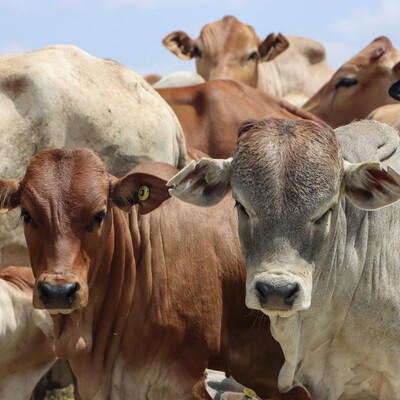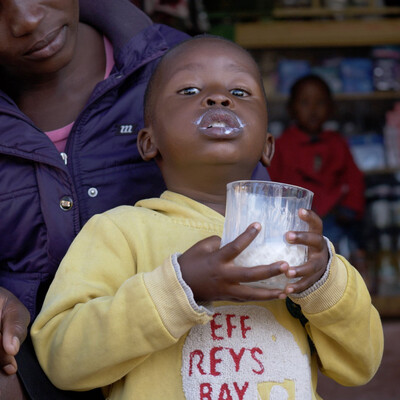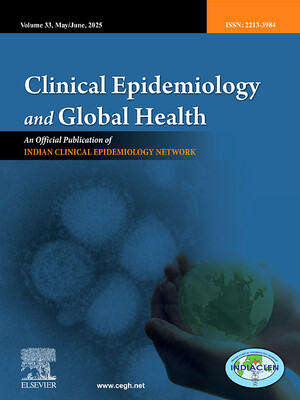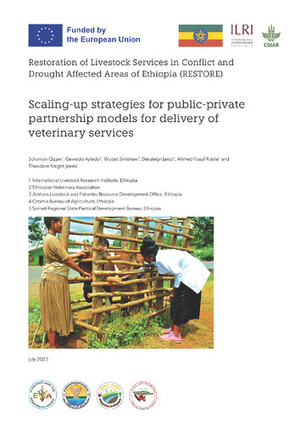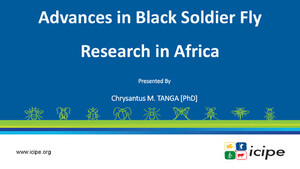
PPR epidemiology to inform risk-based control in Uganda
Joseph Nkamwesiga is a PhD student at Freie Universität Berlin. His PhD research topic is epidemiology of peste des petit ruminants (PPR) in Uganda. It contributes to the PPR epidemiology component of the Boosting Uganda’s Investment in Livestock Development (BUILD) project, whose overall objective is to better understand the infection dynamics of PPR, the importance of small ruminant diseases and evaluate the biological impact of certain interventions, especially vaccination under selected livestock production systems.
Nkamwesiga spoke with us about his work, findings and expected outcomes. Below are excerpts from the interview.
What is peste des petits ruminants?
PPR, also known as sheep and goat plague, is a fatal disease of sheep and goats, which are commonly referred to as small ruminants. It is highly contagious and can spread across boundaries if not controlled. Sick animals usually become visibly weak, dull, with mucus in the nose and mouth and sometimes with profuse diarrhoea. PPR currently affects small ruminants in over 70 countries across Africa and Asia.
Globally, PPR causes losses of between USD1.5–2 billion through direct death of animals, losses in production (reduced milk yield, live weight), trade restrictions and cost of trying to control the disease through vaccines among others. PPR has been identified by the World Organisation for Animal Health (OIE) and the Food and Agricultural Organization of the United Nations (FAO) for eradication by the year 2030 mainly through vaccination.
PPR vaccines are commercially available but lack of financial and technical commitment to PPR control, coupled with absence of refined PPR risk profiling data in different endemic countries has perpetuated PPR virus transmission.
PPR in Uganda
In Uganda, PPR was first detected in the northeastern Karamoja region in 2007 but has since rapidly spread to districts in central and southwestern Uganda over the past five years. Uganda is home to more than 18 million small ruminants, most of which are found in the cattle corridor that runs from the northeastern to the southwestern region of the country.
The Karamoja subregion and the southwestern region are home to about 65% of the country’s small ruminant population. In populations where PPR has never been experienced, an outbreak may result in all the small ruminants being affected by the disease and 90–100% could end up dying. Animals that suffer from PPR often die within two weeks but those that recover develop lifelong protection against the disease, reducing the death rates in endemic areas like Karamoja to 70-80%. While PPR does not spread from animals to human beings, it affects the livelihoods of smallholder farmers because it threatens their sources of income and food.
The available PPR control measures include vaccination, animal movement restrictions (quarantine), good biosecurity measures such as proper carcass disposal, and proper management practices that restrict chances of direct contact between flocks, among others.
What research question did you set out to answer and why?
A team of researchers under the BUILD Uganda project, which is funded by the German Federal Ministry of Economic Cooperation and Development (BMZ), carried out an investigation using confirmed PPR outbreak reports from the 14-year period since PPR was first discovered in Uganda (2007–2020). Their aim was to generate the most likely conditions and points in time, that enable disease occurrence in the districts where PPR is frequently reported.
Because the government of Uganda does not have enough resources to vaccinate all small ruminants in the country, the findings from our work will help in designing and implementing a PPR control plan by prioritizing those areas that are most at risk of PPR outbreaks. This will also prevent the spread of the disease to other districts that might not be at such a high risk initially, but to where it might be carried if infected animals are moved into the areas by pastoralists or traders.
What are the most important findings of your work?
This study found out that PPR was most common in districts with extended road networks, where farmers keep high numbers of small ruminants and in areas that often receive little rainfall annually. Areas with many cattle were also at high risk of having PPR outbreaks because cattle keepers in Uganda often keep small ruminants as well. As cattle density (and indeed small ruminant density) increases in an area, the likelihood of animal congregation that improves chances of contact between flocks increases. Water points during dry seasons were also identified as one of the key risks areas for PPR transmission.
We further found that some areas like the Karamoja region, have reduced chances of PPR outbreak occurrence, most likely as a result of mass vaccination campaigns that have been promoted over time. However, areas in the central and southwestern districts were found to have increased chances of PPR outbreaks, and a list of districts that require urgent attention was generated. The increased risk of outbreaks in these areas was likely because of significant animal movements and limited vaccination efforts. The conclusive reasons for this observation, however, need to be further investigated.
The study concluded that inter-district and cross-border small ruminant movement facilitated by longer road stretches and mixing animals from different locations led to PPR outbreaks as well as PPR virus spread from its initial Karamoja focus to central and southwestern Uganda.
Who might eventually benefit from the findings of your study, and what would need to be done before we could achieve these benefits?
Once these predictions are validated through field observations, the results will be useful to disease control officials at the Ministry of Agriculture, Animal Industry and Fisheries (MAAIF) in prioritizing interventions like developing vaccination schedules to ensure that scarce vaccines go to where they are needed the most and at the right time. This can be effectively implemented following the list of district risk categories generated by this study.
Considerable vaccination coverage helps to build herd immunity among small ruminants in the new hotspot areas to block transmission to further emerging hotspots. This will also facilitate improvement in disease reporting in emerging hotspots since farmers will be able to predict when PPR outbreaks are likely to occur.
Coordination with neighbouring countries need to be operationalized to ensure that only vaccinated animals can be moved across borders.
Photo credit: Sampling exercise to test for PPR in goats (photo credit: ILRI/ Joseph Nkamwesiga).
Further reading and viewing







